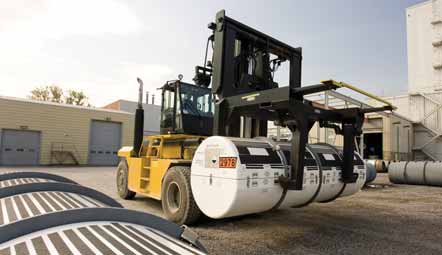
Cameco COO Tim Gitzel on Cigar Lake flooding:
“Regulators have made it clear that we need to
demonstrate improvements in our quality culture.
We agree.”
Cameco Progresses with Cigar Lake Mine Repair, Encounters Problem at Port Hope Conversion Plant

The first phase of the remediation plan involves drilling holes down to the source of the inflow and to a nearby tunnel where reinforcement is needed, pumping concrete through the drill holes, sealing off the inflow with grout and drilling dewatering holes. Subsequent phases for remediation include dewatering the mine, ground freezing in the area of the inflow, restoring underground areas and resumption of mine development. Regulatory approval is required for each phase of the remediation plan.
The company announced that reinforcement of the adjacent tunnel is now complete, and all of the holes required for pouring concrete to seal off the inflow have been drilled. Drilling of four largerdiameter holes required for dewatering is 90% complete.
Regulatory agencies have approved plans to flush sand and fine material away from the inflow area and to pour the concrete plug. The concrete mixture is designed to harden under water and will be poured in successive layers. If the concrete solidifies as planned, it should prevent or reduce water inflows sufficiently to enable mine dewatering, according to the company. The effectiveness of the plug will not be known until dewatering is under way.

The second phase of remediation includes dewatering the underground development, verifying that the water inflow has been sufficiently sealed and installing the surface freezing piping.
Cameco is now working to provide regulators with the information needed to secure approval for installation of dewatering pumps and infrastructure, and ongoing operation of water treatment facilities required for dewatering.
Submissions are being prepared for regulatory approval to dewater the underground development, initiate the installation of the surface freezing infrastructure, and any additional remedial work identified in phases two and three, such as determining if additional reinforcement is required in higher risk areas. Cameco said it is also preparing to submit an application to the Canadian Nuclear Safety Commission for extension of the Cigar Lake construction license which expires at the end of 2007.
Completion of the second phase had been expected by the end of the third quarter of 2007. Cameco now expects it will require a number of additional months to seal the inflow and dewater the mine.
In addition, to ensure a more conservative approach, Cameco—which holds 50% ownership of the property—said it and its partners (Areva Resources, 37%; Idemitsu Canada Resources, 8%; and Tepco Resources, 5%) are examining whether an alternative route out of the mine is required prior to beginning excavation in areas at elevated risk of water inflow, and whether the second shaft needs to be completed to provide additional underground ventilation. Completing the second shaft as a priority item and the delay in completing phase two, as noted above, would set back the planned production startup date from late 2010 to 2011.
Cameco anticipates that a decision on the second shaft will be forthcoming by year end. A revised production forecast will be provided after the decision is made on the second shaft, the mine has been dewatered and the condition of the underground development has been assessed.
“In response to the third-party investigations into the water inflow events at Cigar Lake, the regulators have made it clear that we need to demonstrate improvements in our quality culture. We agree and are taking concrete steps to address the underlying issues,” said Tim Gitzel, Cameco’s COO. “The remediation work at Cigar Lake is technically challenging and our approach has been cautious and prudent. However, we are making steady progress in moving this valuable project toward production.”